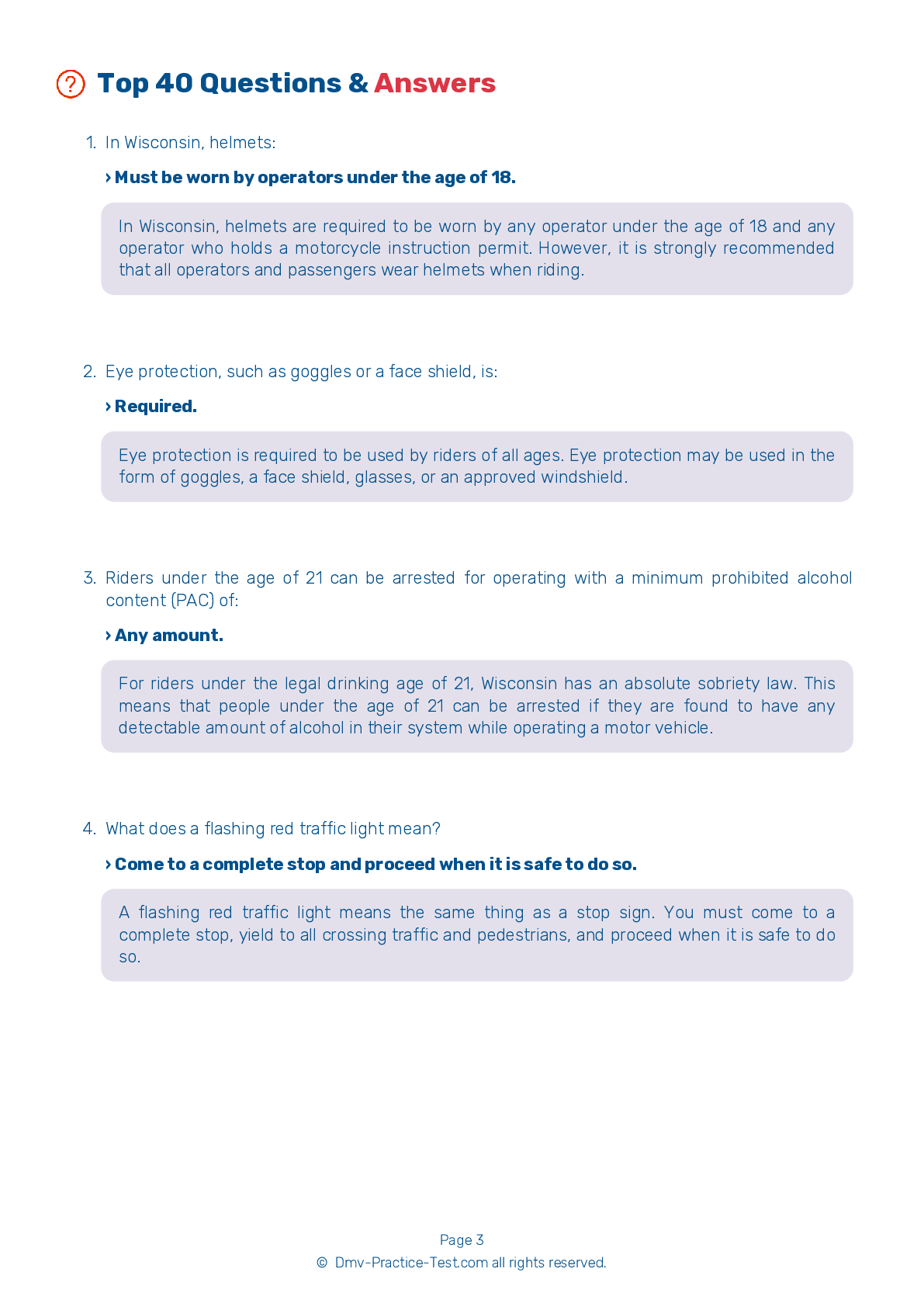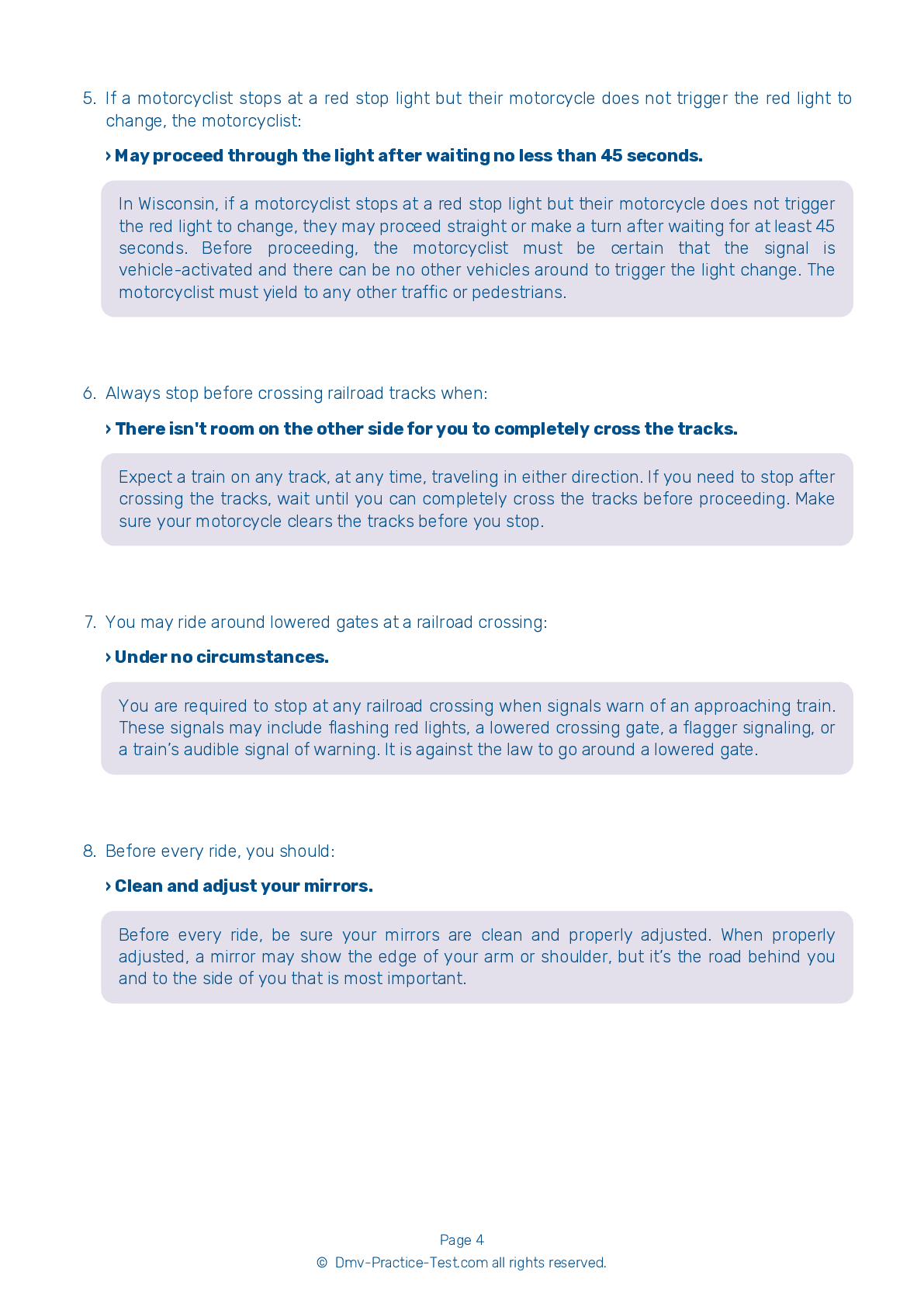Motorcycle Test | License WI 2026 | FREE Online Practice! #6
Take this FREE motorcycle test (license in WI 2026) to check your knowledge of the road rules. To improve your results, download a motorcycle handbook online, study theory, and practice for free on our website. Still worried about how to get a motorcycle license in Wisconsin in 2026? Check our website for more sample tests, train as much as possible, and boost your grades!
1 . When entering a turn, you should:
Reduce your speed before entering a turn. If you take a turn too fast, you may end up veering out of your lane or even off the road.
2 . This sign means:
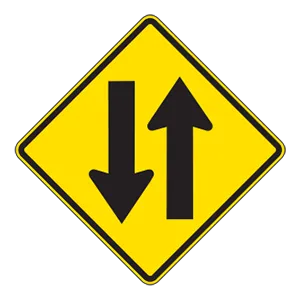
Warning signs prepare drivers for upcoming road conditions and hazards and are usually yellow with black markings. This sign tells drivers that they may encounter traffic coming from the opposite direction.
3 . When riding behind a car, you should ride:
When following a car, you should ride in a position that allows the driver to see you in their rearview mirror. Usually, that means riding in the center portion of the lane. Because most drivers check their rearview mirrors much more often than they check their side mirrors, being in this lane position increases the chance that they will see you.
4 . When it starts to rain, it is usually best to:
Pavement is often especially slippery when it first begins to rain. The rainwater mixes with the oily deposits left by cars that have not yet washed off the road. When riding in rain, the best option is to ride in the tire tracks left by cars ahead of you.
5 . When riding a motorcycle, it is important to:
While it is most important to be aware of what is ahead of you on the road, you cannot ignore what is behind you. You can keep track of the situation behind you by checking your mirrors consistently.
6 . This sign means:
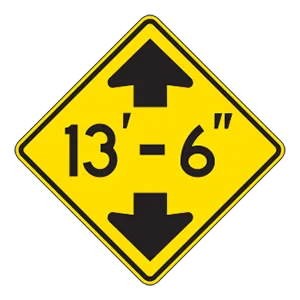
Warning signs prepare drivers for upcoming road conditions and hazards and are usually yellow with black markings. This sign tells drivers that they are approaching an area with low clearance.
7 . The best lane position is:
A properly chosen lane position should provide a number of benefits, including an increased ability to see others and to be seen. It should help you avoid wind blasts, other drivers' blind spots, and surface hazards. Your lane position should discourage other drivers from trying to share your lane and provide you with an escape route, should a hazard arise. Choose a lane position that maximizes your space cushion.
8 . This road sign means:
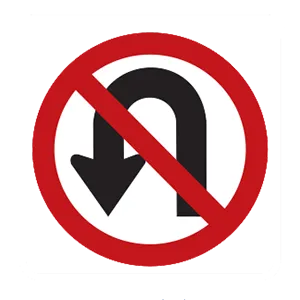
Regulatory signs provide notice to road users of traffic laws that must be obeyed. This sign tells drivers that it is prohibited to make a U-turn.
See the exact questions that will be on the 2026 Wisconsin DMV exam.
99.2% of people who use the cheat sheet pass the FIRST TIME
Jeneen was tired of paying $5/gallon. She got herself a scooter that required the motorcycle license. She studyed the motorcycle test cheat sheet and passed her test the next day!
Christopher tells us how he knew nothing prior to obtaining the motorcycle study guide, and he only got one question wrong because he clicked on the wrong answer by mistake.

